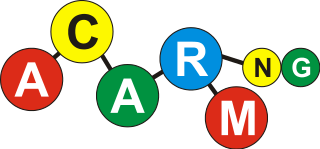 W
WACARM-ng is an open source IDS/IPS system. ACARM-ng is an alert correlation software which can significantly facilitate analyses of traffic in computer networks. It is responsible for collection and correlation of alerts sent by network and host sensors, also referred to as NIDS and HIDS respectively. Correlation process aims to reduce the total number of messages that need to be viewed by a system administrator to as few as possible by merging similar events into groups representing logical pieces of malicious activity.
 W
WA computer worm is a standalone malware computer program that replicates itself in order to spread to other computers. It often uses a computer network to spread itself, relying on security failures on the target computer to access it. It will use this machine as a host to scan and infect other computers. When these new worm-invaded computers are controlled, the worm will continue to scan and infect other computers using these computers as hosts, and this behavior will continue. Computer worms use recursive method to copy themselves without host program and distribute themselves based on the law of exponential growth, and then controlling and infecting more and more computers in a short time. Worms almost always cause at least some harm to the network, even if only by consuming bandwidth, whereas viruses almost always corrupt or modify files on a targeted computer.
 W
WArmitage is a graphical cyber attack management tool for the Metasploit Project that visualizes targets and recommends exploits. It is a free and open source network security tool notable for its contributions to red team collaboration allowing for: shared sessions, data, and communication through a single Metasploit instance. Armitage is written and supported by Raphael Mudge.
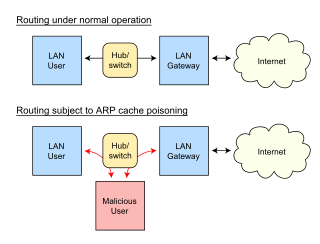 W
WIn computer networking, ARP spoofing, ARP cache poisoning, or ARP poison routing, is a technique by which an attacker sends (spoofed) Address Resolution Protocol (ARP) messages onto a local area network. Generally, the aim is to associate the attacker's MAC address with the IP address of another host, such as the default gateway, causing any traffic meant for that IP address to be sent to the attacker instead.
 W
WArpON is a computer software project to improve network security. It has attracted interest among network managers and academic researchers and is frequently cited as a means of protecting against ARP-based attacks.
 W
WA botnet is a number of Internet-connected devices, each of which is running one or more bots. Botnets can be used to perform Distributed Denial-of-Service (DDoS) attacks, steal data, send spam, and allows the attacker to access the device and its connection. The owner can control the botnet using command and control (C&C) software. The word "botnet" is a portmanteau of the words "robot" and "network". The term is usually used with a negative or malicious connotation.
 W
WA captive portal is a web page accessed with a web browser that is displayed to newly connected users of a Wi-Fi or wired network before they are granted broader access to network resources. Captive portals are commonly used to present a landing or log-in page which may require authentication, payment, acceptance of an end-user license agreement, acceptable use policy, survey completion, or other valid credentials that both the host and user agree to adhere by. Captive portals are used for a broad range of mobile and pedestrian broadband services – including cable and commercially provided Wi-Fi and home hotspots. A captive portal can also be used to provide access to enterprise or residential wired networks, such as apartment houses, hotel rooms, and business centers.
 W
WCapture the flag (CTF) is a traditional outdoor sport where two teams each have a flag and the objective is to capture the other team's flag, located at the team's "base," and bring it safely back to their own base. Enemy players can be "tagged" by players in their home territory and, depending on the rules, they may be out of the game, become members of the opposite team, sent back to their own territory, or frozen in place until freed by a member of their own team.
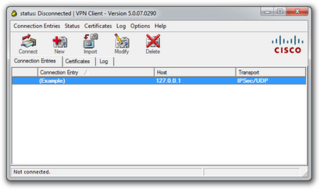 W
WCisco Systems VPN Client is a software application for connecting to virtual private networks based on Internet Key Exchange version 1.
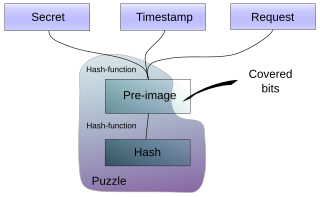 W
WClient Puzzle Protocol (CPP) is a computer algorithm for use in Internet communication, whose goal is to make abuse of server resources infeasible. It is an implementation of a proof-of-work system (POW).
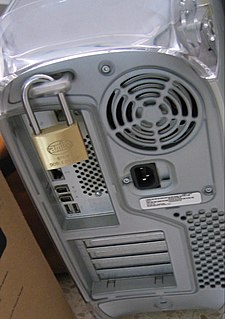 W
WComputer security, cybersecurity or information technology security is the protection of computer systems and networks from the theft of or damage to their hardware, software, or electronic data, as well as from the disruption or misdirection of the services they provide.
 W
WCyberCIEGE is a serious game designed to teach network security concepts. Its development was sponsored by the U.S. Navy, and it is used as a training tool by agencies of the U.S. government, universities and community colleges.
 W
WFail2Ban is an intrusion prevention software framework that protects computer servers from brute-force attacks. Written in the Python programming language, it is able to run on POSIX systems that have an interface to a packet-control system or firewall installed locally, for example, iptables or TCP Wrapper.
 W
WFreeLAN is computer software that implements peer-to-peer, full mesh, virtual private network (VPN) techniques for creating secure point-to-point or site-to-site connections in routed or bridged configurations and remote access facilities. It is free and open-source software licensed under the GNU General Public License Version 3.
 W
WGigamon is a privately held network visibility and traffic monitoring technology vendor. Formerly traded publicly, it is now owned by Elliott Management. Headquartered in Santa Clara, California, Gigamon had 371 employees as of December 27, 2014, and 743 employees as of April 2017.
 W
WGoogle Safe Browsing is a blacklist service provided by Google that provides lists of URLs for web resources that contain malware or phishing content. The Google Chrome, Safari, Firefox, Vivaldi, and GNOME Web browsers use the lists from the Google Safe Browsing service for checking pages against potential threats. Google also provides a public API for the service.
 W
WIn computer terminology, a honeypot is a computer security mechanism set to detect, deflect, or, in some manner, counteract attempts at unauthorized use of information systems. Generally, a honeypot consists of data that appears to be a legitimate part of the site that seems to contain information or a resource of value to attackers, but actually, is isolated and monitored and enables blocking or analyzing the attackers. This is similar to police sting operations, colloquially known as "baiting" a suspect.
 W
WICMP hole punching is a technique employed in network address translator (NAT) applications for maintaining Internet Control Message Protocol (ICMP) packet streams that traverse the NAT. NAT traversal techniques are typically required for client-to-client networking applications on the Internet involving hosts connected in private networks, especially in peer-to-peer and Voice over Internet Protocol (VoIP) deployments.
 W
WThe INOC-DBA hotline phone system is a global voice telephony network deployed and managed by Packet Clearing House that connects the network operations centers and security incident response teams of critical Internet infrastructure providers such as backbone carriers, Internet service providers, and Internet exchanges as well as critical individuals within the policy, regulatory, Internet governance, security and vendor communities.
 W
Wipfirewall or ipfw is a FreeBSD IP, stateful firewall, packet filter and traffic accounting facility. Its ruleset logic is similar to many other packet filters except IPFilter. ipfw is authored and maintained by FreeBSD volunteer staff members. Its syntax enables use of sophisticated filtering capabilities and thus enables users to satisfy advanced requirements. It can either be used as a loadable kernel module or incorporated into the kernel; use as a loadable kernel module where possible is highly recommended. ipfw was the built-in firewall of Mac OS X until Mac OS X 10.7 Lion in 2011 when it was replaced with the OpenBSD project's PF. Like FreeBSD, ipfw is open source. It is used in many FreeBSD-based firewall products, including m0n0wall and FreeNAS. A port of an early version of IPFW was used since Linux 1.1 as the first implementation of firewall available for Linux, until it was replaced by ipchains. A modern port of ipfw and the dummynet traffic shaper is available for Linux and Microsoft Windows. wipfw is a Windows port of an old (2001) version of ipfw.
 W
WKaspersky Anti-Virus is a proprietary antivirus program developed by Kaspersky Lab. It is designed to protect users from malware and is primarily designed for computers running Microsoft Windows and macOS, although a version for Linux is available for business consumers.
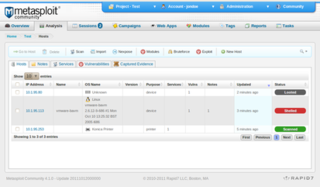 W
WThe Metasploit Project is a computer security project that provides information about security vulnerabilities and aids in penetration testing and IDS signature development. It is owned by Boston, Massachusetts-based security company Rapid7.
 W
WThe National Initiative for Cybersecurity Education (NICE) is a partnership between government, academia, and the private sector focused supporting the country's ability to address current and future cybersecurity education and workforce challenges through standards and best practices. NICE is led by the National Institute of Standards and Technology (NIST) in the U.S. Department of Commerce.
 W
Wnetsniff-ng is a free Linux network analyzer and networking toolkit originally written by Daniel Borkmann. Its gain of performance is reached by zero-copy mechanisms for network packets, so that the Linux kernel does not need to copy packets from kernel space to user space via system calls such as recvmsg . libpcap, starting with release 1.0.0, also supports the zero-copy mechanism on Linux for capturing (RX_RING), so programs using libpcap also use that mechanism on Linux.
 W
WA Network Enclave is a section of an internal network that is subdivided from the rest of the network.
 W
WNetwork Security Toolkit (NST) is a Linux-based Live DVD/USB Flash Drive that provides a set of free and open-source computer security and networking tools to perform routine security and networking diagnostic and monitoring tasks. The distribution can be used as a network security analysis, validation and monitoring tool on servers hosting virtual machines. The majority of tools published in the article "Top 125 security tools" by Insecure.org are available in the toolkit. NST has package management capabilities similar to Fedora and maintains its own repository of additional packages.
 W
WAn open proxy is a proxy server that is accessible by any Internet user. Generally, a proxy server only allows users within a network group to store and forward Internet services such as DNS or web pages to reduce and control the bandwidth used by the group. With an open proxy, however, any user on the Internet is able to use this forwarding service.
 W
WOPNsense is open source, FreeBSD-based firewall and routing software developed by Deciso, a company in the Netherlands that makes hardware and sells support packages for OPNsense. It is a fork of pfSense, which in turn was forked from m0n0wall, which was built on FreeBSD. It was launched in January 2015. When m0n0wall closed down in February 2015 its creator, Manuel Kasper, referred its developer community to OPNsense. OPNsense has a web-based interface and can be used on i386 and x86-64 platforms. Along with acting as a firewall, it has traffic shaping, load balancing, and virtual private network capabilities, and others can be added via plugins.
 W
WA packet analyzer or packet sniffer is a computer program, or computer hardware such as a packet capture appliance, that can intercept and log traffic that passes over a computer network or part of a network. Packet capture is the process of intercepting and logging traffic. As data streams flow across the network, the analyzer captures each packet and, if needed, decodes the packet's raw data, showing the values of various fields in the packet, and analyzes its content according to the appropriate RFC or other specifications.
 W
WPacketFence is an open-source network access control (NAC) system which provides the following features: registration, detection of abnormal network activities, proactive vulnerability scans, isolation of problematic devices, remediation through a captive portal, 802.1X, wireless integration and User-Agent / DHCP fingerprinting.
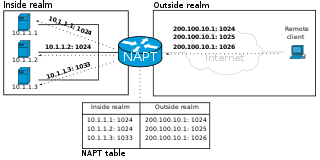 W
WIn computer networking, port forwarding or port mapping is an application of network address translation (NAT) that redirects a communication request from one address and port number combination to another while the packets are traversing a network gateway, such as a router or firewall. This technique is most commonly used to make services on a host residing on a protected or masqueraded (internal) network available to hosts on the opposite side of the gateway, by remapping the destination IP address and port number of the communication to an internal host.
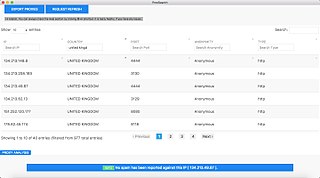 W
WA proxy list is a list of open HTTP/HTTPS/SOCKS proxy servers all on one website. Proxies allow users to make indirect network connections to other computer network services. Proxy lists include the IP addresses of computers hosting open proxy servers, meaning that these proxy servers are available to anyone on the internet. Proxy lists are often organized by the various proxy protocols the servers use. Many proxy lists index Web proxies, which can be used without changing browser settings.
 W
WIn network security a screened subnet refers to the use of one or more logical screening routers as a firewall to define three separate subnets: an external router, that separates the external network from a perimeter network, and an internal router that separates the perimeter network from the internal network. The perimeter network, also called a border network or demilitarized zone (DMZ), is intended for hosting servers that are accessible from or have access to both the internal and external networks. The purpose of a screened subnet or DMZ is to establish a network with heightened security that is situated between an external and presumed hostile network, such as the Internet or an extranet, and an internal network.
 W
WShadowsocks is a free and open-source encryption protocol project, widely used in mainland China to circumvent Internet censorship. It was created in 2012 by a Chinese programmer named "clowwindy", and multiple implementations of the protocol have been made available since. Shadowsocks is not a proxy on its own, but typically, the client software will connect to a third party socks5 proxy, speaking the shadowsocks language on the machine it is running on, which internet traffic can then be directed towards, similarly to an SSH tunnel. Unlike an SSH tunnel, shadowsocks can also proxy UDP traffic.
 W
WSoftEther VPN is free open-source, cross-platform, multi-protocol VPN client and VPN server software, developed as part of Daiyuu Nobori's master's thesis research at the University of Tsukuba. VPN protocols such as SSL VPN, L2TP/IPsec, OpenVPN, and Microsoft Secure Socket Tunneling Protocol are provided in a single VPN server. It was released using the GPLv2 license on January 4, 2014. The license was switched to Apache License 2.0 on January 21, 2019.
 W
WSSL-Explorer: Community Edition was an open-source SSL VPN product developed by 3SP Ltd, a company acquired by Barracuda Networks. It is licensed under the GNU General Public License (GPL), and is aimed primarily at smaller businesses that need remote access to internal network resources.
 W
WThe Storm botnet or Storm worm botnet is a remotely controlled network of "zombie" computers that have been linked by the Storm Worm, a Trojan horse spread through e-mail spam. At its height in September 2007, the Storm botnet was running on anywhere from 1 million to 50 million computer systems, and accounted for 8% of all malware on Microsoft Windows computers. It was first identified around January 2007, having been distributed by email with subjects such as "230 dead as storm batters Europe," giving it its well-known name. The botnet began to decline in late 2007, and by mid-2008 had been reduced to infecting about 85,000 computers, far less than it had infected a year earlier.
 W
WA virtual private network (VPN) extends a private network across a public network and enables users to send and receive data across shared or public networks as if their computing devices were directly connected to the private network. Applications running across a VPN may therefore benefit from the functionality, security, and management of the private network. Encryption is a common, although not an inherent, part of a VPN connection.
 W
WVyOS is an open source network operating system based on Debian GNU/Linux.
 W
Ww3af is an open-source web application security scanner. The project provides a vulnerability scanner and exploitation tool for Web applications. It provides information about security vulnerabilities for use in penetration testing engagements. The scanner offers a graphical user interface and a command-line interface.
 W
WWarchalking is the drawing of symbols in public places to advertise an open Wi-Fi network. Inspired by hobo symbols, the warchalking marks were conceived by a group of friends in June 2002 and publicised by Matt Jones who designed the set of icons and produced a downloadable document containing them. Within days of Jones publishing a blog entry about warchalking, articles appeared in dozens of publications and stories appeared on several major television news programs around the world.
 W
WWardriving is the act of searching for Wi-Fi wireless networks, usually from a moving vehicle, using a laptop or smartphone. Software for wardriving is freely available on the internet.
 W
WWazuh is a free, open-source host-based intrusion detection system (HIDS). It performs log analysis, integrity checking, Windows registry monitoring, rootkit detection, time-based alerting, and active response. It provides intrusion detection for most operating systems, including Linux, OpenBSD, FreeBSD, macOS, Solaris and Windows. Wazuh has a centralized, cross-platform architecture allowing multiple systems to be monitored and managed.
 W
WWireless security is the prevention of unauthorized access or damage to computers or data using wireless networks, which include Wi-Fi networks. The most common type is Wi-Fi security, which includes Wired Equivalent Privacy (WEP) and Wi-Fi Protected Access (WPA). WEP is a notoriously weak security standard: the password it uses can often be cracked in a few minutes with a basic laptop computer and widely available software tools. WEP is an old IEEE 802.11 standard from 1997, which was superseded in 2003 by WPA, or Wi-Fi Protected Access. WPA was a quick alternative to improve security over WEP. The current standard is WPA2; some hardware cannot support WPA2 without firmware upgrade or replacement. WPA2 uses an encryption device that encrypts the network with a 256-bit key; the longer key length improves security over WEP. Enterprises often enforce security using a certificate-based system to authenticate the connecting device, following the standard 802.1X.
 W
WZ-Wave is a wireless communications protocol used primarily for home automation. It is a mesh network using low-energy radio waves to communicate from appliance to appliance, allowing for wireless control of residential appliances and other devices, such as lighting control, security systems, thermostats, windows, locks, swimming pools and garage door openers. Like other protocols and systems aimed at the home and office automation market, a Z-Wave system can be controlled via the Internet from a smart phone, tablet or computer, and locally through a smart speaker, wireless keyfob, or wall-mounted panel with a Z-Wave gateway or central control device serving as both the hub controller and portal to the outside. Z-Wave provides the application layer interoperability between home control systems of different manufacturers that are a part of its alliance. There are a growing number of interoperable Z-Wave products; over 1,700 in 2017, and over 2,600 by 2019.
 W
WZeroTier Inc. is a software company with a freemium business model based in Irvine, California. ZeroTier provides open-source software, SDKs and commercial products and services to create and manage virtual software defined networks. The company's flagship end-user product ZeroTier One is a client application that enables devices such as PCs, phones, servers and embedded devices to securely connect to peer-to-peer virtual networks.
 W
WIn computing, a zombie is a computer connected to the Internet that has been compromised by a hacker, computer virus or trojan horse program and can be used to perform malicious tasks of one sort or another under remote direction. Botnets of zombie computers are often used to spread e-mail spam and launch denial-of-service attacks. Most owners of "zombie" computers are unaware that their system is being used in this way. Because the owner tends to be unaware, these computers are metaphorically compared to fictional zombies. A coordinated DDoS attack by multiple botnet machines also resembles a "zombie horde attack", as depicted in fictional zombie films.